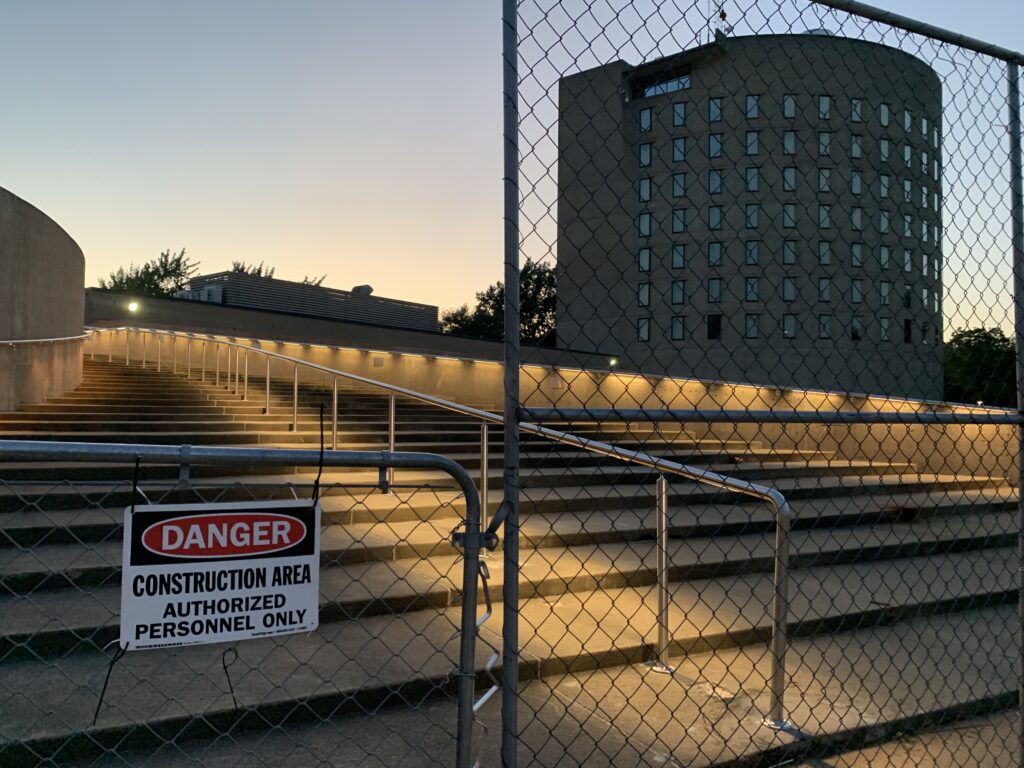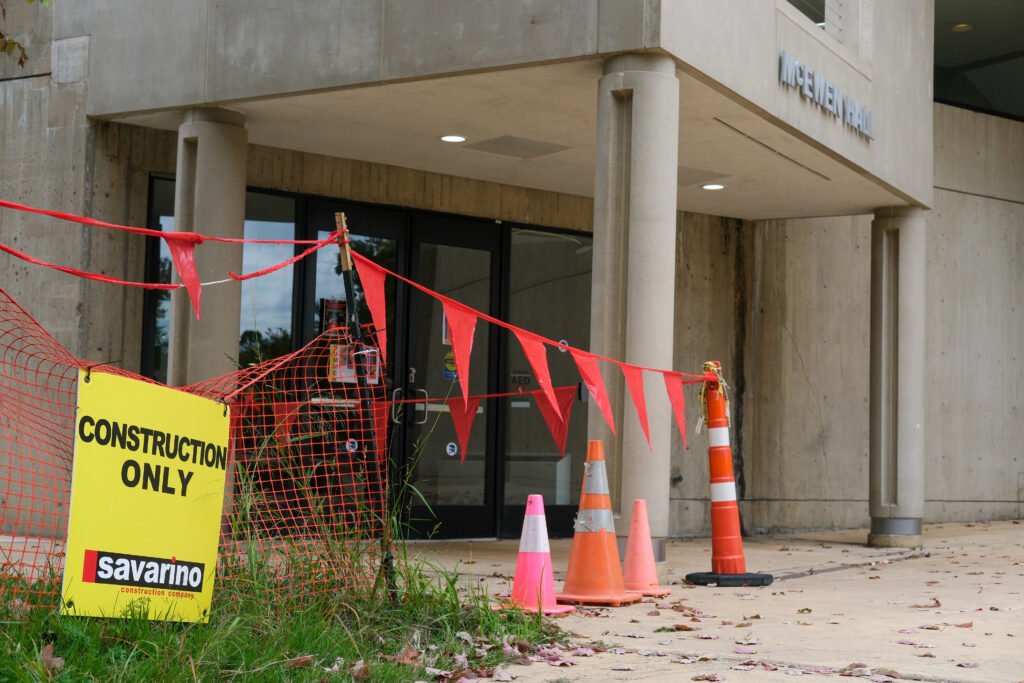LEE PYE
Special to The Leader

McEwen Hall, Reed Library and the Maytum Hall plaza have been under construction since the fall of 2020.
Unless students are in their fourth year on campus, they have never stepped foot onto the concrete stairs outside of Reed Library.
Many questions have been floating around campus about this project, and answers have not been forthcoming from those involved.
There are two ways to complete construction projects on campus.
One is through the State University Construction Fund (SUCF), which allows the university to oversee the project while the state funds it. All of that money can be used for the specific project in question, and the campus does not have to give the money back to the state.
The other method is specifically reserved for residential halls. A debt service is put in place where money is spent on these projects. The money, however, needs to be paid back in bonds.
The plaza is funded through an SUCF fund, requiring the money allocated for it to remain committed to the plaza.
Markus Kessler, the director of facilities planning on campus, said, “I think people get a bit like, ‘why are we spending millions of dollars on doing this [one project] when we have this [other project]? It’s two different pots, and it does not impact the campus’ budget whatsoever.’”
Kenneth Schmitz, the capital project manager, added, “We can’t move the money from one pot to another.”
This project actually started back in 2011, where a facilities master plan was created to decide what to work on for the next 20 years. It is considered a “living master plan,” which can be changed based on necessity and urgency.
Every year, during a work plan meeting, projects that need to be worked on within the next five years are identified. The plaza construction fell within this timeline.
Kessler was in charge of creating a project request for this specific plan and explaining what exactly needed to be done. That traveled through the SUCF, which pieces the budget together.
Then, a project manager was identified, which in this case was Schmitz, who works with the construction fund, architect and contractor. He also is in charge of creating a plan if something goes wrong or needs to be redone.
The timeline for this project has been changed — the original prediction for its duration was two summers, and it’s now been three. Then the finish line changed to August of 2023, and now it’s been pushed back again.
COVID-19 was only a minor pushback for the construction, though.
“It slowed it down maybe by four months, but COVID happened in a time where there wasn’t a heck of a lot of work that they really needed to do,” Kessler said. “Once [the contractors] came up with their COVID plan and submitted that plan, they could go back to work. So I don’t want to say that COVID really held this project up.”
Within this large construction project, multiple things were worked on.
The construction crew replaced the horizontal concrete services because they were a tripping and safety hazard.
A large portion of the stairs that lead to Reed was removed and replaced with a ramp for ADA (Americans With Disabilities Act) accessibility.
The walkway between McEwen and Reed has two purposes as both a walkway and the roof. The roofing system underneath the walkway had to be replaced as well. New pavers were also installed to cover it.
Lighting was put in the stairways and walkways. A stair was removed between the McEwen and Reed entrance, and railings and structural work was put in.

The construction is currently in a “Punch List” phase, which means that the project is almost complete.
To keep track of progress, Schmitz, Kessler and the architect physically and repetitively walk through the project and evaluate what still needs to be done or touched up.
Schmitz said, “The biggest thing that needs to be done is that the work that was done to repair the concrete steps needs to be redone. Within a week of doing some of that, it started to fail because it wasn’t done properly. That’s probably going to be our biggest headache.”
There are smaller tasks that still need to be done as well. The face of the canopy has missing precast panels, which need to be produced and put in. Because the fabrication of those panels takes time, they can’t finish the ceiling or the roof until it’s done.
There are touch-ups for electrical work for the lighting in the stairs and railings. The torn-up lawn from the construction needs to be graded and seeded to get the grass back. Some of the asphalt walkways weren’t done properly, so those also need to be redone.
Schmitz broke the news that, “Nothing is being worked on right now. The contractor has gone bankrupt. Not because of this project, but because of a project that they have with the Dormitory Authority at Alfred State. So they have filed for bankruptcy. When that happens, every contract that’s bid has a bond and a bonding company associated with it. So if the contractor defaults, or we can’t get them to do the work, or they go bankrupt, that company takes it over. You can imagine the legal mess that comes with that.”
This “legal mess” consists of negotiating with the bonding company to get contracts transferred, getting insurances settled, then also trying to bring back the workers to finish the work they started. “And we are unfortunately five feet from the finish line,” Schmitz said.
However, Schmitz and Kessler have been attempting to get at least some of the campus back.
They have been advocating to the SUCF for students and staff. Their idea is that even though the construction is not done, the sections that are safe for students and staff should be opened, and the fencing barrier should be restricted to only the locations that are unsafe.
However, the fencing company needs to approve and take down the fence. Nobody on campus can take it down, and there is no approval pending to remove it at this point.
It could be a few months until the area opens back up, and it could be another full summer until the construction is actually completed.
It’s a guarantee right now that all of the things that need to be done will not be completed by the end of this year. Since it’s an outside project, there are multiple factors.
The weather can put a stop to construction and the asphalt plants tend to shut down for winter because it’s too cold to lay the asphalt.
At this point, it seems like it might be a while before this project can call itself “completed.”
